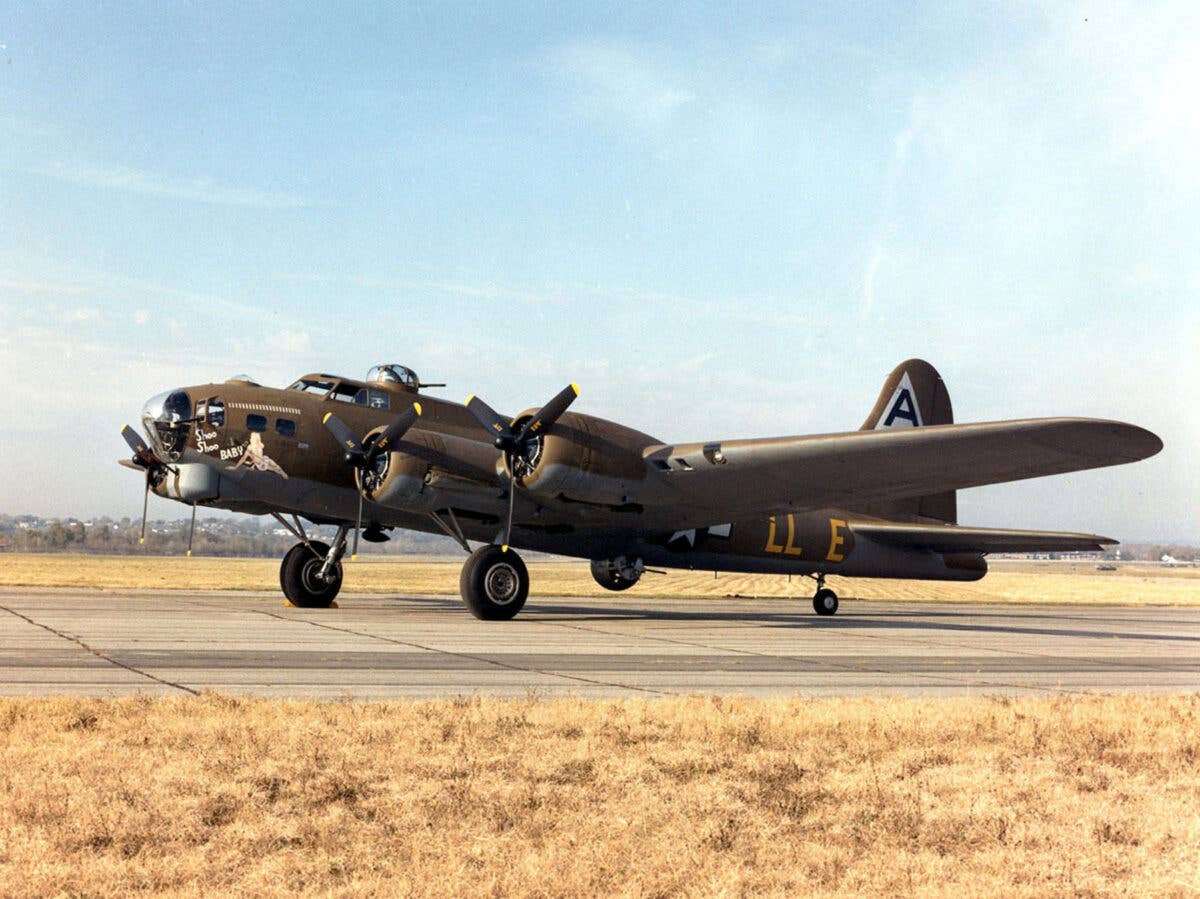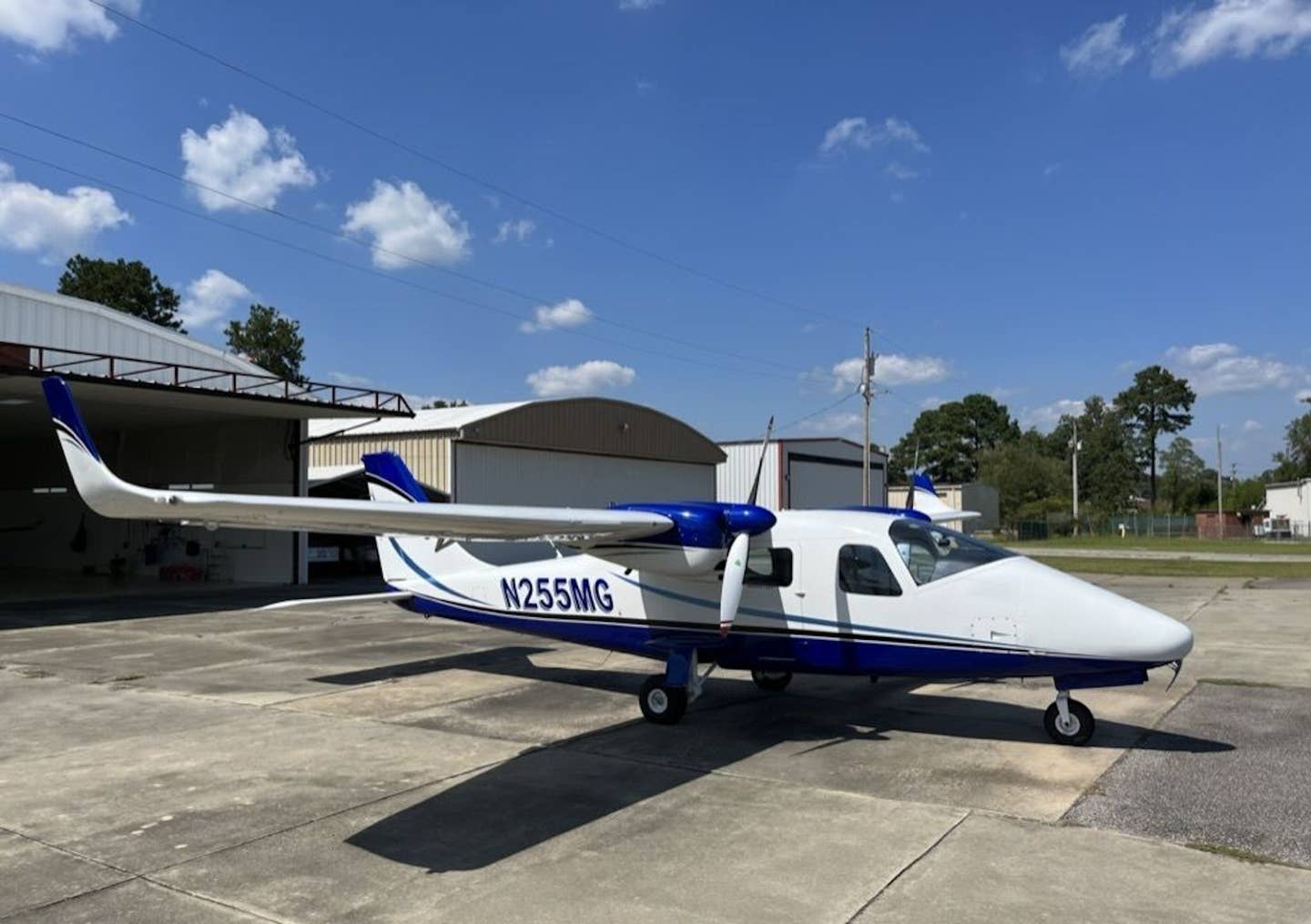FAA Grounds B-17s Through Airworthiness Directive
The agency’s ‘interim AD’ cites issues with the iconic World War II airplane’s wing spars.

Boeing B-17G Superfortress “Shoo Shoo Baby” at the National Museum of the United States Air Force. The bomber has since been moved to the museum’s restoration area where it will remain in storage until it is transferred to the Smithsonian’s National Air & Space Museum. [Courtesy: U.S. Air Force]
The much-anticipated airworthiness directive for Boeing B-17s has been released by the FAA. The AD addresses issues with the wing spars.
The warbird community has been aware of the potential issue for several weeks. The owners of the remaining airworthy B-17s had grounded their aircraft as a precaution.
The FAA describes the measure as an "interim AD" intended for all Boeing B-17E, F, and G models.
Per the FAA documentation: "This AD was prompted by a report indicating that the left front spar lower fitting had completely separated at the wing-to-fuselage joint, and the equivalent joint on the right side of the airplane was cracked. This AD requires inspections of the wing terminal-to-spar chord joints, and repair if necessary. The FAA is issuing this AD to address the unsafe condition on these products."
The B-17 is a four-engine bomber designed by the Boeing Co. in the 1930s, using pencil, paper, and slide rules. Bristling with machine guns in addition to the ability to carry a hefty bomb payload, the aircraft was nicknamed “The Flying Fortress.” In combat it soon earned a reputation for being a tough machine that could sustain extraordinary amounts of damage yet still bring the crews home.
During World War II some 12,731 B-17s were built; now there are less than 25 of the iconic aircraft still flying. Others are on permanent static display in aviation museums. Most were destroyed after the war and recycled into beer cans and the like.
Over the past 20 years, the only way to see a B-17 in the air was at an air show or when the aircraft touring groups came to your city. Warbird buffs planned their year around the visits of the aircraft belonging to the Commemorative Air Force, Collings Foundation, and Experimental Aircraft Association.
Two weeks ago, EAA director of communications Dick Knapinski told a reporter from WBAY-TV in Green Bay, Wisconsin, that the organization had made the decision to ground its B-17 Aluminum Overcast as a precautionary measure, and that he doubted there would be any airworthy B-17s at EAA AirVenture in Oshkosh this year because the other entities that own the aircraft are doing the same. Knapinski also pointed out the airframes were designed for short-term use—to win a war—and now they are 80 years old. The fact they have lasted as long as they have can be attributed to the meticulous care provided by the organizations that own and operate them—and sometimes that means keeping them on the ground.
“The B-17 fleet operators are working closely with the FAA to collect information for this robust 75-plus-year-old platform,” said Drew Stephani, EAA communications specialist. “We are all focused on keeping the fleet safe and ultimately in the air for all to enjoy for generations to come.”
The FAA estimates that this AD affects 18 airplanes of U.S. registry, of which only three are airworthy at this time. The others are undergoing restoration. In addition, there is a B-17 in operation in the United Kingdom.
The FAA estimates the inspection costs to comply with this AD will be approximately $2,125 per aircraft for 25 hours of labor at $85 per hour. Inspections for all U.S. operators of the aircraft are estimated to cost $38,700.
Background on the AD
According to AD documentation, in 2021 during a walk-around, pretakeoff check of a B-17 "it was discovered that the left wing had shifted away from the fuselage by about 2 inches. Further investigation was conducted when both wings were removed in 2023 and found complete separation of the left front spar lower fitting at the wing-to-fuselage joint as well as additional cracking on the equivalent joint on the right side of the airplane.
"This condition, if not addressed, could result in fatigue cracking of the wing terminal-to-spar chord joints, which could result in loss of control of the airplane and reduced structural integrity of the airplane.”
Spars have been an issue before. In 2001 the FAA issued an AD for cracks in the spar chord of the B-17, but this new AD has determined a new inspection procedure needs to be developed. It was noted that some of the aircraft operate under experimental airworthiness certificates and give rides to the public. For this reason, the FAA has "intentionally included these airplanes in the applicability of this AD because of the risks associated with passenger-carrying operations frequently conducted by these airplanes."
AD Compliance
This AD requires inspections of the wing terminal-to-spar chord joints to detect cracking and corrosion using one of two methods:
- A magnetic particle inspection of the terminal fittings and an eddy current inspection of the spar chord
- An eddy current bolt hole inspection on the steel terminal fittings and the aluminum spar chord
The results of the inspection must be sent to the FAA. The agency considers this AD to be an interim step, noting the information gleaned from the inspection reports "will enable the FAA to obtain better insight into the nature, cause, and extent of the discrepancies found on the affected airplanes, and develop a long-term solution that will address the unsafe condition. Once final action has been identified, the FAA might consider further rulemaking."
The AD becomes effective on June 1, 2023, but comments are being taken until July 3.
Comments may be submitted using the procedures found in FARs 11.43 and 11.45 and by any of the following methods:
- Federal eRulemaking Portal: Go to regulations.gov and follow the instructions for submitting comments.
- Fax: 202-493-2251
- Mail: U.S. Department of Transportation, Docket Operations, M–30, West Building Ground Floor, Room W12-140, 1200 New Jersey Avenue SE, Washington, D.C., 20590.
- Online

Subscribe to Our Newsletter
Get the latest FLYING stories delivered directly to your inbox






